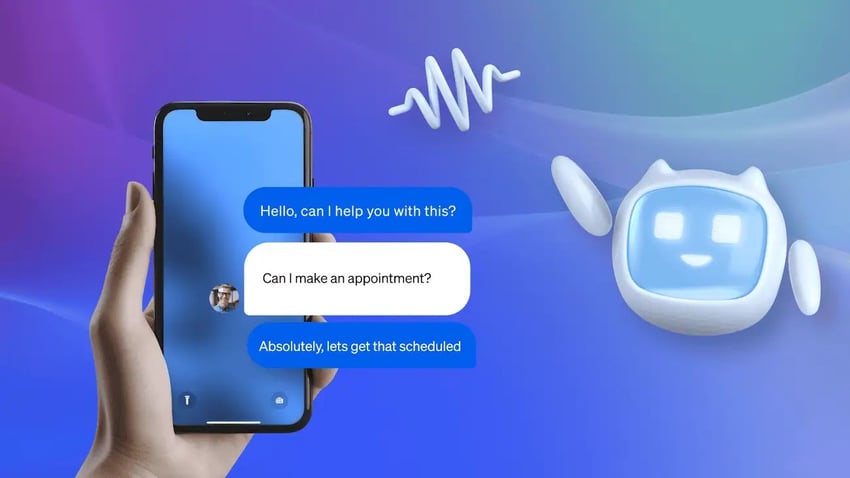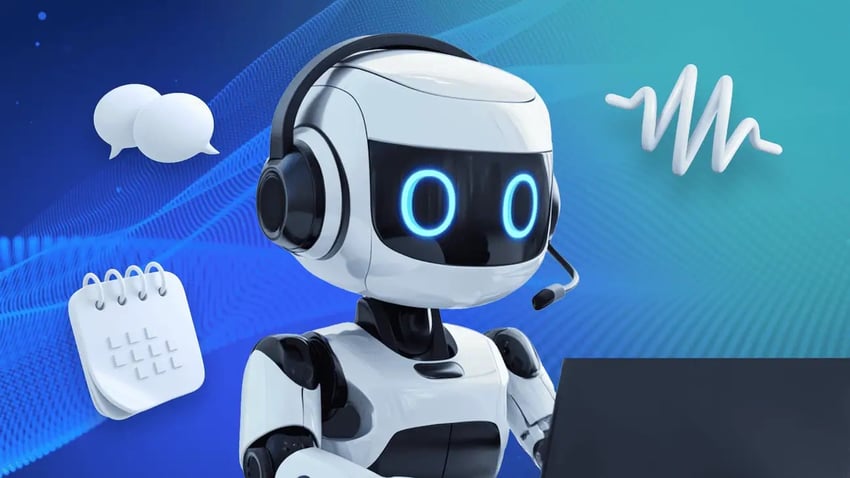Healthcare organizations and providers have never had an easy job. They need to help patients by diagnosing and treating complex conditions, handling surges in seasonal infections, and even dealing with potential workplace violence.
And while these challenges will always exist, the reality is that there are now AI tools that can help organizations manage all of them more effectively.
Today, AI solutions can help providers with everything from improved internal workflows to personalizing treatment plans and even accurately predicting risk factors before a patient shows symptoms. In this post, we’ll discuss how AI is transforming the industry and improving the healthcare customer experience.
How AI Is Transforming Healthcare Today
AI technology has already begun transforming the healthcare industry and the patient experience, and we’re still in the early stages of its development. Let’s look at a few of the most common ways AI is already impacting healthcare.
AI-powered diagnostics and imaging
One of the most established uses of AI in healthcare is in medical imaging.
Deep learning algorithms can now analyze X-rays, CT scans, and MRIs faster and often more accurately than radiologists, especially in the early detection of cancer.
For example, colonoscopy image recognition software can flag polyps in real time, improving accuracy and speeding up diagnosis. This software may actually increase the detection of small polyps by up to 50%.

AI is also being used to identify hidden indicators of disease from medical images, such as coronary calcium in heart scans — a predictor of future cardiovascular risk — or total kidney volume in polycystic kidney disease, which was previously a labor-intensive manual process.
Predictive risk groupings
Using large datasets and patient history, AI algorithms can identify patients at high risk of complications like sepsis, opioid dependency, or heart failure even before symptoms are obvious.
One study, for example, found that AI reduced the risk of a common sepsis complication — fluid overload — by predicting patients’ responses to resuscitation and improving clinical decision accuracy.
Another study found that AI may be able to help identify patients at risk for agitation. By identifying at-risk patients, providers can intervene before agitation becomes dangerous, either to the patient or to hospital staff. This is particularly important with the rates of violence against healthcare workers.
These predictive models enable providers to act earlier and possibly improve their decision-making, which can potentially prevent complications that could otherwise result in hospitalizations or adverse events.
Public health responses
Generative AI and machine learning also play growing roles in managing population health by identifying patterns that inform public health interventions.
During the COVID-19 pandemic, for example, scientists used neural networks and novel datasets to develop infection forecasting models. These tools could help prevent deficiencies experienced during past infectious outbreaks and could be used for a variety of purposes, including infectious disease management, health equity, and access to care.
Virtual scribes and workflow automation
AI is transforming administrative tasks with tools like ambient listening and speech recognition.
AI medical scribes automatically capture clinical notes during patient visits, summarizing key details in real time and synchronizing them with electronic health records (EHRs). These tools significantly reduce clinician documentation burden and cognitive load, which in turn can help reduce burnout and improve patient-facing time.
Other examples include AI-generated patient letters, intelligent coding for billing, and scheduling automation, all of which streamline operations. They reduce or eliminate time-consuming tasks, which can potentially reduce human error without compromising care quality.
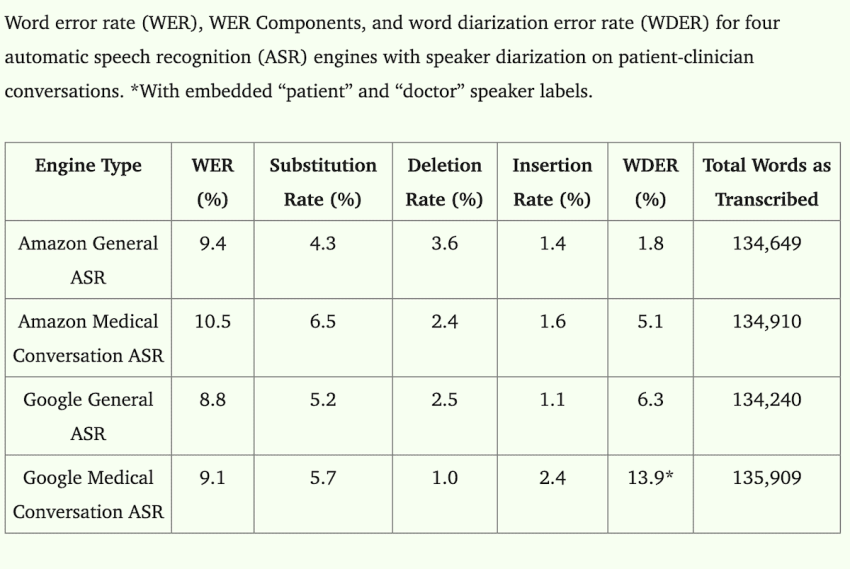
Enhancing the Patient Experience Through AI
There are plenty of ways that clinical practices and hospital systems can leverage AI solutions to improve the patient experience. Let’s discuss a few common options.
Personalized treatment plans
One of the most common examples of AI in healthcare is the personalization of treatments.
AI systems can now support precision medicine by analyzing a patient’s genetic, lifestyle, and clinical data to recommend customized treatment pathways based on clinical predictions.
For rare diseases or complex diagnoses, AI can surface similar case histories or suggest less obvious conditions that may not be on a physician’s radar.
For patients, this translates into faster diagnoses, fewer unnecessary tests, and treatment options better aligned with their individual health profiles.
Providers can be confident knowing that they have plenty of data to support their patients’ treatment plans, and successful treatment can even reduce patient no-shows.
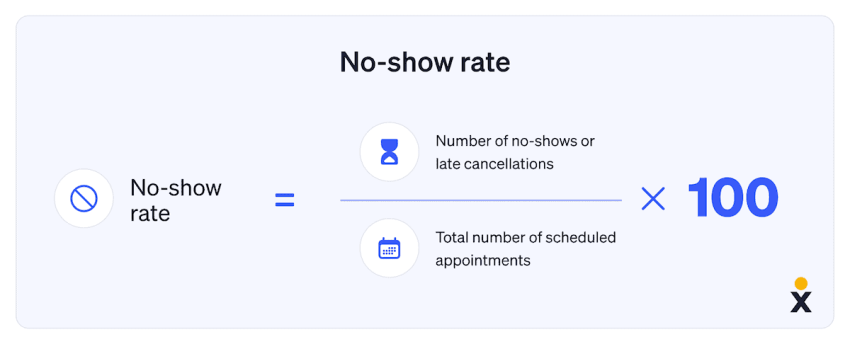
Conversational chatbots for 24/7 support
AI chatbots, built using natural language processing (NLP), are now capable of triaging symptoms, answering frequently asked questions, and offering medication reminders. They can also be used for administrative tasks, like helping patients pay bills or rescheduling appointments.
In some cases, patients have rated chatbot responses higher than those from physicians in terms of empathy and clarity (though real-world oversight remains essential).
These bots are proving especially useful in mental health, chronic disease management, and post-operative recovery, where timely communication makes a measurable difference.
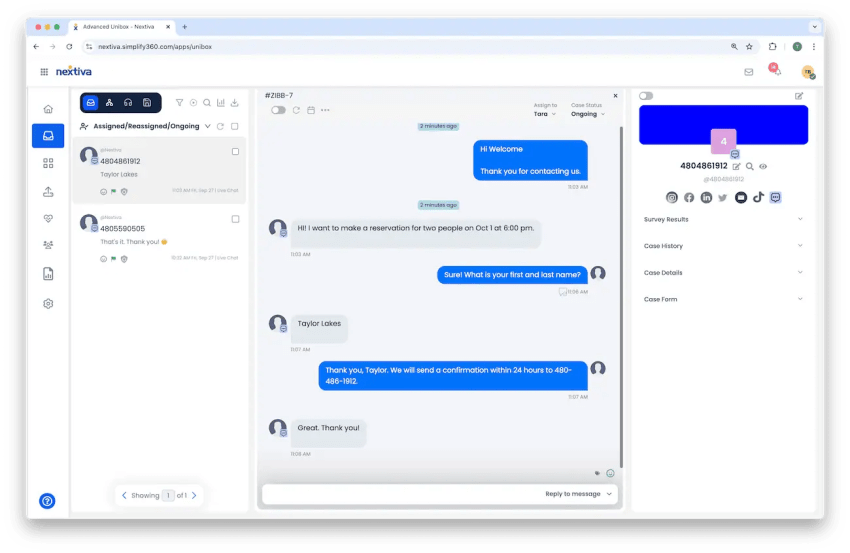
Remote monitoring and wearable data integration
AI enables real-time monitoring of patients through wearable devices that track vital signs, including blood pressure, glucose levels, oxygen saturation, and more.
Algorithms can alert care teams when readings cross thresholds, which enables early intervention and quick responses.
This technology is critical for high-risk populations and aging adults, as it supports independent living with oversight. It can also be essential during a diagnostic process or to help patients with complex conditions.
Real-World Use Cases and Innovations
We’ve already discussed multiple examples of how AI is transforming healthcare, but some recent innovations are particularly valuable. Let’s look at some of the most exciting AI innovations currently impacting healthcare.
AI in breast cancer detection
Deep learning models can now analyze mammograms and identify early-stage cancers that might have been missed by the human eye, even if that human eye came from a highly trained radiologist. These tools can even prioritize high-risk patients for faster follow-up or recommend treatment plans, which may improve outcomes.

NLP in EHRs
NLP is a type of AI that allows artificial intelligence to understand and even generate human language.
NLP-focused AI tools can now parse through unstructured data in a patient’s medical records through their EHR to extract meaningful insights.
It can flag potential drug interactions that could easily be overlooked, summarize lengthy medical history notes, or identify gaps in care plans that should be addressed based on a patient’s condition.
Predictive analytics for hospital management
AI technology can now help hospitals do everything from forecasting ER surges to optimizing staffing levels and even managing ICU bed capacity. The organization can be ready for what’s coming, which may prevent staff, bed, and supply shortages.
This is particularly important during pandemics or flu seasons.
Genomic sequencing assistance
AI can accelerate the analysis of genomic data, which is a significant advancement that may help pinpoint mutations linked to disease.

This is key in oncology and rare disease diagnosis, and may be vital in determining the genetic factors that contribute to certain conditions. Early detection may result in opportunities for prevention, and as more immunotherapy drugs are developed, it will be essential for accelerating gene therapies across a wide range of conditions.
AI in clinical trials
Algorithms help match patients to relevant clinical trials based on condition, genetics, and location. This could speed up research, enable clinicians to find the most suitable volunteers for each study, and ultimately improve access to advanced treatments.
Challenges and Ethical Considerations
While artificial intelligence has promising and impressive use cases, it’s also important to consider that AI tools can present unique challenges that need to be accounted for, including potential biases, transparency concerns, and data privacy issues.
Bias in training data
AI systems can be trained on real health data; however, if trained on narrow datasets, they risk perpetuating systemic inequities when it comes to underrepresented patient groups. For example, studies have shown that women are 66.1% more likely to be misdiagnosed than men, and systemic racism in America can result in poorer outcomes for Black patients.
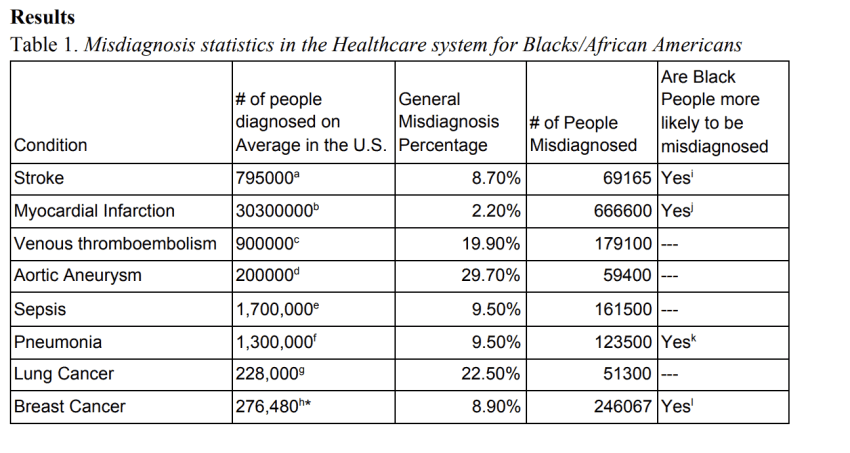
It will be imperative to ensure that training data accounts for these factors and can accurately assess risk based on factors like race and gender without discrimination.
Transparency and explainability
Clinicians need to be able to trust AI recommendations, but that’s difficult to do when many AI models operate as black boxes that don’t explain how decisions were reached. This makes it difficult for providers to know whether they can rely on AI recommendations, which can significantly slow them down while they come to their own conclusions.
AI tools that can provide their reasoning — such as explaining which symptoms, risk factors, or test results led them to their conclusions — can help doctors successfully evaluate AI recommendations when deciding on a patient’s treatment plan.
Regulation and data privacy
As AI systems increasingly analyze sensitive patient data, strong safeguards are essential. These systems must offer strict HIPAA compliance and adhere to other essential regulations like the GDPR. Essential security and privacy frameworks must be baked into the software, ensuring that patient data is protected.

Human-AI collaboration
AI can never replace clinicians, but it can act as a copilot. Healthcare professionals will still need to provide clinical judgement, treatment context, and compassion for patients.
That said, finding the right balance will be essential. Clinicians may need training to determine how much they can rely on AI recommendations, for example, and how to leverage AI tools to improve the patient experience across all touchpoints.
The Future of AI in Healthcare
We’re still in the early days of AI technology, but clear use cases are already emerging in healthcare systems. These are the most likely applications of AI in the healthcare sector that you can expect to see:
- Preventive care through real-time risk alerts to improve provider response and patient outcomes.
- Mental health triage and digital therapy tools for improved patient access.
- AI-augmented surgeries using robotics and visual guidance for better surgical outcomes.
- Public health monitoring using social media trends and geographic data.
- Value-based care models that are supported by predictive outcomes data.
- Improved patient experience through automated communications and improved internal workflows.
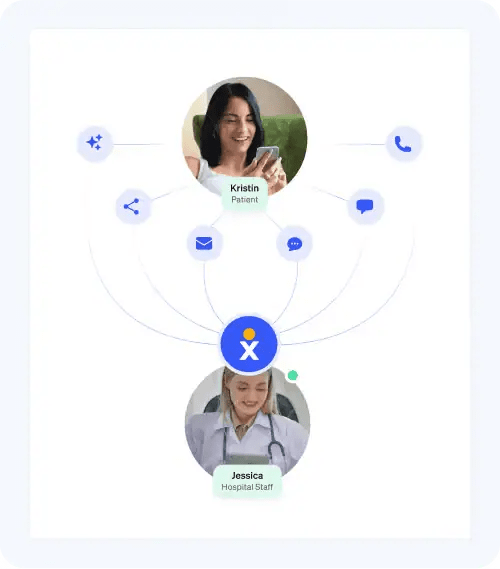
We already know that AI won’t cure every issue in healthcare, but it will help systems become more proactive, personalized, and efficient. The goal isn’t to replace clinicians, but to enable them to do more of what they do best, including offering more responsive and personalized treatment plans to patients.
Why Healthcare Organizations Trust Nextiva
There are many ways AI will impact the future of patient care, but healthcare systems can start benefiting from AI technology today with tools like Nextiva.
Nextiva’s unified communications platform is perfectly suited to help healthcare organizations integrate AI into their operational workflows, impacting key touchpoints across the patient experience.
From AI-powered call routing and HIPAA-compliant real-time transcription to secure messaging and patient engagement tools, Nextiva enables healthcare providers to:
- Streamline clinical communications across departments
- Deliver omnichannel support with compliance-grade security
- Gain insights into patient interactions with real-time analytics
- Support hybrid care delivery with seamless video and voice integrations
“Over the years, we have seen continuous growth. It seems like every month there is a new release from Nextiva with new features we can implement, and it not only helps us reach our members, but it also helps us streamline processes for our employees. Because it’s so super user-friendly, it’s easy to implement something new … It gives us more insight into other ways to continue evolving.” — Mandi Thomas, VP of Customer Journey at Ontrak Health

“Over the years, we have seen continuous growth. It seems like every month there is a new release from Nextiva with new features we can implement, and it not only helps us reach our members, but it also helps us streamline processes for our employees. Because it’s so super user-friendly, it’s easy to implement something new … It gives us more insight into other ways to continue evolving.”
— Mandi Thomas
Ready to improve your team’s workflow and patient communication processes? Check out Nextiva’s UCaaS solutions for the healthcare industry today.
Unify conversations for the ideal patient experience.
Small practices to large healthcare organizations trust Nextiva to manage all their end-to-end patient interactions using our HIPAA-compliant platform.

















 Customer Experience
Customer Experience 









